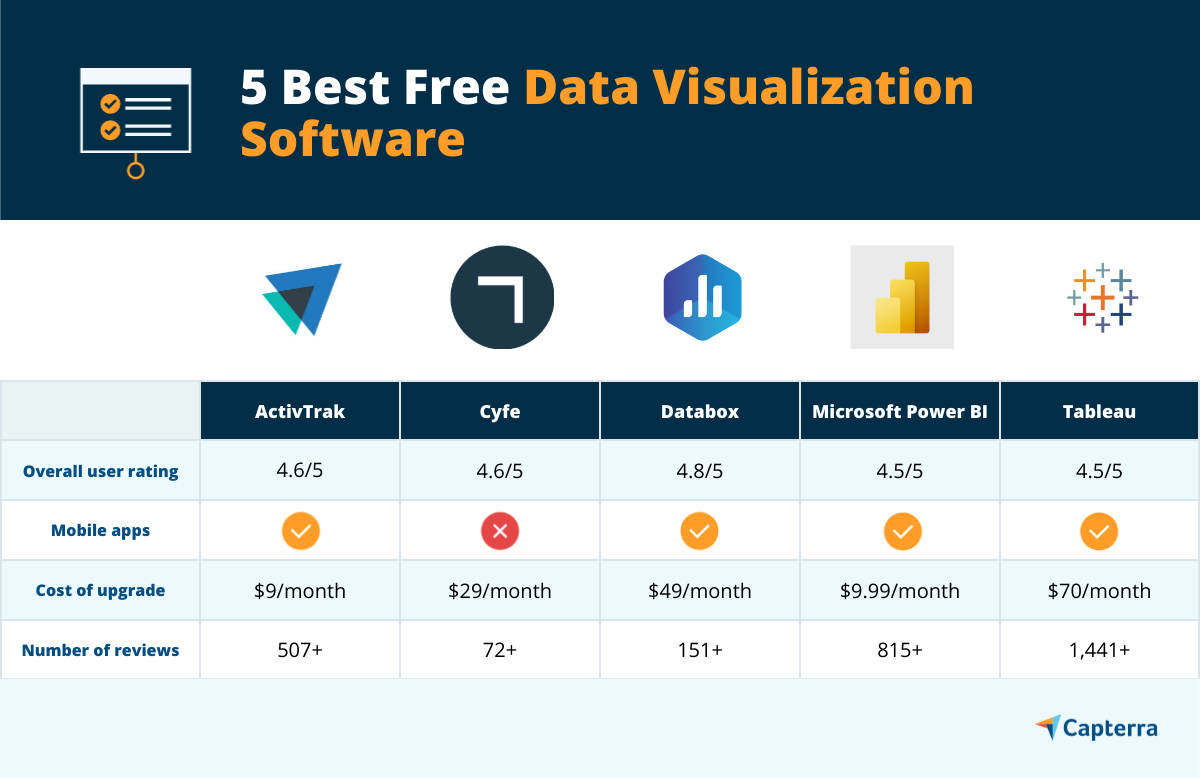News Blast
Your daily source for breaking news and insightful articles.
Charting a New Course: Data Visualization Tools That Wow
Discover powerful data visualization tools that transform your insights into stunning visuals. Unleash your creativity and wow your audience!
Top 5 Data Visualization Tools That Can Transform Your Analysis
In today's data-driven world, having the right data visualization tools can make a significant difference in how effectively you can analyze and present information. Whether you're a data analyst, a business owner, or just someone interested in making sense of numbers, leveraging the power of these tools can transform your analysis. Here are the top 5 data visualization tools that stand out in the industry:
- Tableau: Known for its user-friendly interface and robust features, Tableau allows users to create interactive and shareable dashboards.
- Power BI: A Microsoft product, Power BI integrates seamlessly with other MS tools and provides stunning visualizations to showcase your data.
- QlikView: This tool offers associative data indexing, allowing users to explore data freely without being confined to a predefined path.
- Google Data Studio: A powerful, free tool that helps you convert data into customizable informative reports and dashboards.
- Looker: A modern platform that enables businesses to explore, analyze, and share real-time business analytics easily.

How to Choose the Right Data Visualization Tool for Your Project
Choosing the right data visualization tool for your project can significantly impact your ability to convey information effectively. Start by assessing the complexity of your data and the insights you want to communicate. For simple datasets, tools like Excel or Google Sheets might suffice, while more complex visualizations may require advanced platforms such as Tableau or Power BI. Consider the following factors when making your choice:
- Ease of Use: Look for a tool that matches your team's skill level.
- Integration: Ensure it can easily connect with your existing data sources.
- Cost: Evaluate your budget and explore both free and paid options.
Another essential aspect to consider is customization. The ability to tailor your visualizations to meet the specific needs of your audience can enhance engagement and clarity. Tools with drag-and-drop functionality allow for quick adjustments and less technical skill, while coding-based solutions offer greater flexibility. Additionally, consider the collaboration features of the tool you choose, as sharing insights with your team or stakeholders can be crucial for project success. By carefully weighing these factors, you can select a data visualization tool that aligns perfectly with your project goals.
The Power of Visual Data: Why Visualization Matters in Decision Making
In today's data-driven world, visualization is more important than ever. With an overwhelming amount of data available, decision-makers need tools that help them understand complex information quickly and effectively. Visual data representation—such as graphs, charts, and infographics—translates raw numbers into clear stories. This not only aids in identifying trends and patterns but also facilitates faster decisions. When presented visually, data can be processed up to 60,000 times faster than text, underscoring the necessity of incorporating visuals in the decision-making process.
Moreover, the impact of visual data extends beyond comprehension; it enhances communication among teams. Utilizing visualization tools fosters collaboration by providing a common ground for discussion. As team members analyze charts or dashboards, they can quickly align their insights, ultimately leading to more informed and cohesive decisions. When teams utilize visual data effectively, they create a culture that prioritizes transparency and data literacy, paving the way for more strategic outcomes in their projects.